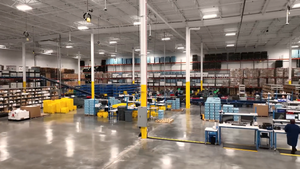The logistics and distribution buildings that serve the life sciences sector are critical in maintaining the flow of pharmaceutical products, medical devices, and biopharmaceutical supplies. The "from lab to jab" journey - used to describe the life cycle of life sciences goods from R&D to final application at the point of care - depends on specialised real estate infrastructure. Each step of the journey, from drug formulation to clinical distribution, requires specific types of premises to ensure product safety, regulatory compliance, and logistical efficiency.
Institutional investors have increasingly turned their attention to life sciences distribution assets, recognising their stable, long-term income potential and strategic role in global healthcare. This article explores the evolving appeal of life sciences distribution properties, looking both from a top-down market perspective and delving into significant deals in Europe that exemplify the scale and demand for such real estate.
A sector gaining momentum
Life sciences distribution assets, which include warehouses, cold storage, and highly specialised facilities for medical storage, are becoming attractive to investors because they cater to the expanding life sciences sector. These properties play a key role in the supply chain by offering temperature-controlled environments, secure storage, and operational flexibility. Furthermore, many distribution functions are outsourced by pharma companies to logistics partners, increasing the need for tailored, strategically located facilities. For instance, Sanofi, the French pharmaceutical giant, is outsourcing its distribution in France to DHL, with the transition impacting three major sites. Such partnerships illustrate the growing reliance on third-party logistics providers (3PLs) with life sciences expertise.
Compliance with Good Distribution Practice (GDP) and other certifications, including ISO standards, ensures the integrity of pharmaceutical products during transport and storage. Failure to adhere to these standards can result in "temperature excursions," which can ruin sensitive products, making highly regulated real estate indispensable. The complexity and regulatory nature of this sector lead to "sticky" long-term tenancies.





